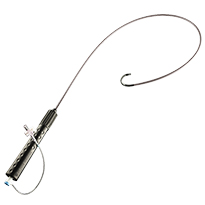Abbott offers access devices that help electrophysiologists and cardiac interventionalists reliably access areas of the heart during ablation and mapping procedures. We design our devices to deliver high maneuverability and enhanced physician control1,2 even during complex electrophysiology (EP) procedures
Agilis NxT Steerable Introducer
The Agilis™ NxT steerable introducer is designed to replace a fixed curve introducer. It helps you reach hard-to-access areas of the heart by providing a stable platform for improved catheter manipulation and contact. Used in more than 1,000,000 procedures, the Agilis NxT steerable introducer provides outstanding agility and stability during catheter access and positioning.2
This device is commercially available for use in select international markets.
References
- Piorkowski, C., Kottkamp, H., Gerds-Li, J. H., Arya, A., Sommers, P., Dagres, N., Hindricks, G. (2008). Steerable sheath catheter navigation for ablation of atrial fibrillation: A case-control study. Pacing and Clinical Electrophysiology, 31(7), 863-873. https://dx.doi.org/10.1111/j.1540-8159.2008.01101.x
- Abbott Data on file, Agilis NxT Steerable Introducer Claims Matrix, Document # 90119641. World's leading steerable introducer claim based on IMS EP Q1 18 Market Share data.
MAT-2009425 v1.0

